9 Drought-Resistant Landscaping Ideas for Montana
BY KIMBERLY MAGERL | MAY 25TH, 2023 | LAWN CARE, MONTANAMontana is rich in natural resources, wildlife, unique vegetation, and adventure. The Treasure State’s geographic diversity and altitudinal ranges create variable climates. Western Montana is mountainous, with cool summers and snowy winters, while central and eastern Montana experience warmer summers and cold winters. No matter where you live in Big Sky Country, there are drought-resistant landscaping ideas that will help you conquer the dry conditions.
Switching to drought-resistant landscaping means less time, effort, water, weeding, mowing, and pests. In steppe climates like Montana where average rainfall is less than 15 inches per year, water conservation is important.
In this article, we’ll cover:
9 Drought-Resistant Landscaping Ideas for Montana
- Landscape With Native Plants
- Plant Perennials
- Group Your Plants
- Mulch Your Flower Beds
- Add Sustainable Hardscaping
- Conserve Water With Xeriscaping
- Eliminate Mowing With Groundcover
- Consider Artificial Grass
- Plant Water-Wise Succulents
FAQ About Drought-Resistant Landscaping in Montana
9 Drought-Resistant Landscaping Ideas for Montana
1. Landscape With Native Plants
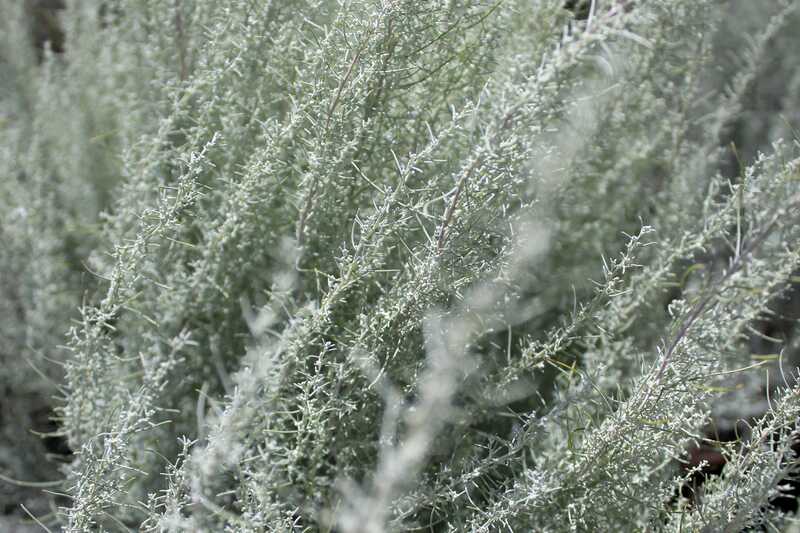
Photo Credit: Rawpixel
Native plants support conservation efforts and promote a healthy ecosystem. They thrive in the summer heat and dry conditions while remaining cold-hardy enough to survive Montana’s harsh winters and snow. Native plants are hands-off, water efficient, and resistant to local insects and diseases.
The vibrant, late-summer and early-fall blooms attract pollinating insects, while the dried stalks and leftover seed heads provide food and shelter for songbirds in the winter. From preferring full sun to part shade, they are the most low-maintenance and drought-resistant plants you can include in your landscaping project.
There are many Montana native plants to choose from, including:
- Big Sagebrush (Artemisia tridentata)
- Chokecherry (Prunus virginiana)
- Rocky Mountain Juniper (Juniperus scopulorum)
- Saskatoon Serviceberry Amelanchier alnifolia)
- Skunkbush Sumac (Rhus trilobata)
Advantages of native plants:
- Thrive in Montana’s semi-arid and continental climates and four seasons
- Require less water, fertilizer, and pesticides
- Support a diverse ecosystem, providing food and shelter for local wildlife, hummingbirds, and pollinators
- Disease and pest-resistant
- Prevent water run-off
- Improve air quality
Estimated cost: Native plant prices vary widely based on many factors, including type, size, and location. On average, you can expect to spend between $15 to $50 per shrub, $5 to $50 per vine, and $200 to $1,500 per tree.
2. Plant Perennials
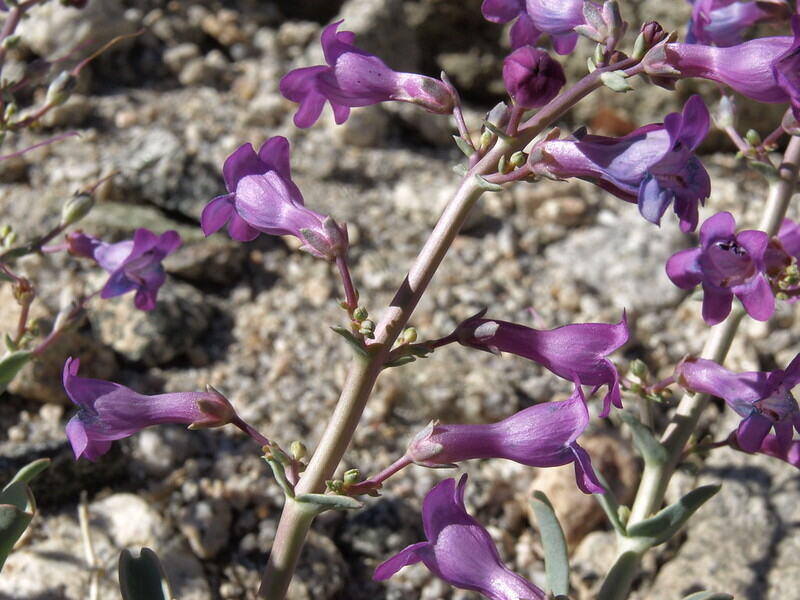
Photo Credit: Jim Morefield / Flickr / CC BY-SA 2.0
Don’t let the vibrant flowers lining the shelves of your stores fool you. While inexpensive, these eye-catching blooms only remain beautiful for a short time. These landscape plants are annuals and only last one growing season before dying in the fall. If bright blooms make your heart sing, you can switch out your annuals for drought-tolerant and cold-resistant perennials.
Perennials bloom year after year, surviving the cold Montana winters. They have a shorter, more defined blooming season than annuals and are more expensive. However, these drought-tolerant plants withstand more extreme weather and come in many varieties, including shade-tolerant, deer-resistant, and low-maintenance wildflowers, ornamental grasses, shrubs, vines, and more.
If you are ready for landscaping beauty that bounces back every year, check out some of the best perennials for the Treasure State:
- Beardtongue (Penstemon)
- Blanketflower (Gaillardia aristata)
- Howell’s Pussytoes (Antennaria howellii)
- Purple Coneflower (Echinacea angustifolia)
- White Prairie Aster (Symphyotrichum falcatum)
Advantages of perennials:
- Bloom yearly
- Last 10-20 years or more
- Improve soil structure
- Prevent erosion
- Water and nutrient-efficient
Estimated cost: Like native plants, the average cost of perennial plants varies depending on the size and type of plant, purchase location, and whether you are having a professional handle your landscaping. If you head to your local store to purchase your own perennials, you can expect to spend between $10 to $100 per plant.
3. Group Plants
Hydrozones are a crucial component of drought-resistant landscape design. They are groupings of plants with similar soil, water, and sunlight needs. Hydrozoning reduces water use and protects your plants from being over or under-watered.
Some common Montana plant groupings include:
- Blanketflower and Little Bluestem
- Cordroot Beardtongue and Rosy Pussytoes
- Ponderosa Pine and Rocky Mountain Maple
- Purple Prairie Clover and Alkali Cordgrass
Advantages of hydrozoning:
- Water-efficient
- Reduces runoff and air pollution
- Lower maintenance
- Reduces chemical use
Estimated cost: You can save money and DIY relocate your plants into groups based on their water needs. You can expect to spend between $15 to $50 per shrub, $5 to $50 per vine, and $200 to $1,500 per tree for fresh additions.
4. Mulch Your Flower Beds
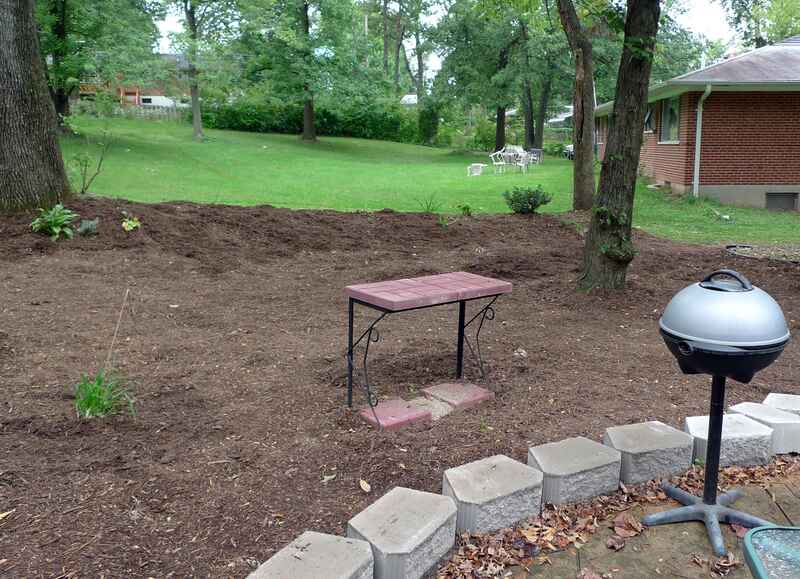
Photo Credit: christina rutz / Flickr / CC BY 2.0
Mulch is a loose material typically made of inorganic or organic matter like compost, tree bark, wood chips, or rubber. It is an inexpensive DIY job that provides enormous benefits for your Montana landscape. Mulch helps reduce weeds, conserve moisture, and protect your plants’ roots from cold and heat.
Organic mulch adds beneficial nutrients to the soil as it decomposes. Inorganic mulches are more durable and low-maintenance but do not offer additional nutrients. It is important to note you will need to replace organic mulches like wood chips annually with a fresh layer.
Some examples of mulch are:
Organic mulch:
- Hardwood and softwood chips
- Bark
- Wood shavings
- Pine needles
- Straw or hay
- Leaves
- Grass clippings
Inorganic mulch:
- Rock, stone, lava rock
- Landscape glass
- Rubber mulch
- Landscape fabric
- Reflective mulch
Advantages of mulch:
- Increases moisture retention
- Reduces weeds
- Protects plant roots from extreme heat and cold
- Reduces evaporation
- Adds curb appeal
Estimated cost: According to Lowes and Home Depot, wood mulch costs between $3 to $5 per 2-cubic-foot bag. Rubber mulch is more durable and expensive, costing around $8 to $10 per 0.8-cubic-foot bag. If your landscaping project requires a lot of mulch, you can often purchase it in bulk to save money.
5. Add Sustainable Hardscaping
Montana is incredibly dry across most of the state. While many native plants are adapted to the harsh conditions, Big Sky Country’s weather is unpredictable and unforgiving. Consider hardscaping your backyard to add sustainable visual interest while eliminating the need for weekly maintenance and watering.
Hardscapes are man-made features, including:
- Decks
- Patios
- Pergolas
- Garden paths
- Decorative stones
- Fire pits
- Rock gardens
- Water features
- Grill surrounds
Hardscapes are a set-it-and-forget-it choice for your landscape. They don’t require watering, pruning, or mowing. In fact, they don’t require maintenance at all except for an annual cleaning. Be prepared. Hardscapes are an expensive upfront investment, but they increase your home’s value and curb appeal.
Advantages of hardscapes:
- Only require annual cleaning
- Increase property value and curb appeal
- Define spaces and increase functionality: entertaining, cooking, outdoor living
- Conserve water
- Reduce weeds and pests
- Create shade
- Reduce soil erosion
Estimated cost: Be prepared to spend around $7,500 for a new deck, $4,000 for a patio, $850 for a fire pit, and $3,000 for a flagstone walkway.
6. Conserve Water With Xeriscaping
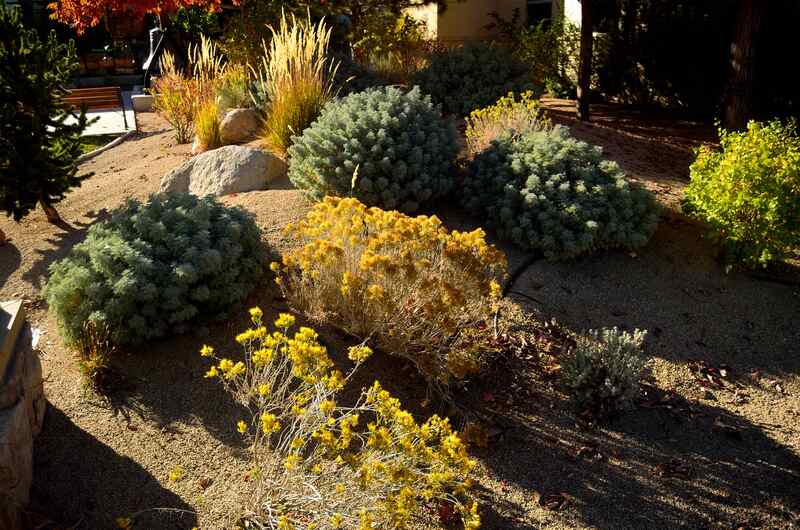
Photo Credit: Tom Hilton / Flickr / CC BY 2.0
Montana’s mountainous western regions, with their continental climates, receive over 35 inches of annual rainfall. Unfortunately, the steppe climates in the central and eastern regions of the Treasure State only receive around 15 inches or fewer, far below the national average rainfall of 30 inches.
Like hardscaping, xeriscaping focuses on low-maintenance landscaping with additional emphasis on water conservation. Xeriscaping involves creating a beautiful home landscape that requires no watering except natural rainfall.
Montana native plants and turfgrasses are a great water-wise option for xeriscaping your yard. They are naturally drought resistant and adapted to harsh seasonal shifts. Besides native plants, some basic steps for xeriscaping your yard include:
- Plan and hydrozone your landscape by grouping plants with similar water needs together
- Mulch your flower beds for maximum water retention
- Install smart irrigation with a rain sensor, drip lines, and automatic sprinklers
- Minimize turfgrass area
- Blend hardscaping elements into your landscape
Advantages of xeriscaping:
- Conserves water
- Reduces pesticide and herbicide use
- Reduces runoff
- Lowers water bills
Estimated cost: Professional xeriscaping costs between $5 to $20 per square foot, depending on many factors like plant selection and the size of your yard. While upfront costs may seem high, you will save around $0.36 per square foot annually on water and maintenance costs.
7. Eliminate Mowing With Groundcover
Slopes, shade, sedimentary rock, and sandstone all have one thing in common. They can make growing turfgrass incredibly difficult. Luckily, your lawn doesn’t need to be covered in traditional grass to have a thick, green appearance. Drought-resistant, low-maintenance groundcover makes a great alternative to grass. These plants grow a few inches tall and spread quickly to fill horizontal space.
Groundcover fills areas of your lawn to mimic “grass.” They are low-maintenance, which means less work for you. These plants still require water and the occasional fertilizer, but selecting a native Montana groundcover will ensure your new “grass” is hardy, drought tolerant, and low-maintenance.
Check out these popular Montana groundcovers:
- Creeping Juniper (Juniperus horizontalis)
- Creeping Oregon Grape (Berberis repens)
- Little Green Sedge (Carex viridula)
- Mountain Avens (Dryas hookeriana)
- Rosy Pussytoes (Antennaria rosea)
Advantages of groundcovers:
- Conserves water
- Pest resistant
- No mowing required
- Fewer weeds
- Requires fewer chemicals
Estimated cost: Groundcover plants cost around $5 to $50 each, depending on size.
8. Consider Artificial Grass
Lush lawns are scarce in Montana thanks to its semi-arid climate. Luckily, 365 days of perfectly manicured, green lawn is possible if you channel your favorite 1970s sitcom family, the Brady Bunch. Artificial turf is eco-friendly, comes in a variety of colors and styles, and is essentially an outdoor carpet. And contrary to popular belief, it is really hard to tell fake grass from real grass in most cases.
Artificial grass is expensive to install and may render your soil unusable in the future. However, it is virtually maintenance-free and a great four-season option for the Great Plains region.
Advantages of artificial grass:
- No maintenance other than occasional cleaning
- Pest free
- Reduces water consumption
- Doesn’t require chemicals
- Lasts up to 20 years
Estimated cost: Professional artificial grass installation costs between $5 to $20 per square foot.
9. Plant Water-Wise Succulents
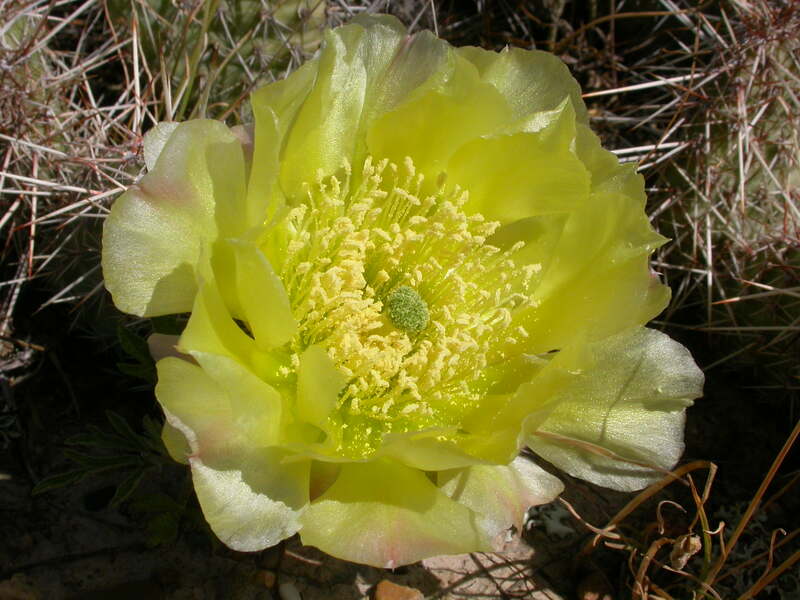
Photo Credit: Matt Levin / Flickr / CC BY-SA 2.0
If you live in central or eastern Montana, consider planting drought-resistant succulents like cacti. Succulents love arid climates and thrive in the sedimentary rocks of Montana thanks to their thick leaves and shallow root systems. They prefer to be left alone, so you can forget about watering your plants and let nature take over. Succulents come in a variety of shapes and sizes and work great in back and front yards.
Check out these native Big Sky Country succulents:
- Brittle Prickly Pear (Opuntia fragilis)
- Missouri Foxtail (Coryphantha missouriensis)
- Plains Prickly Pear (Opuntia polyacantha)
- Simpson’s Hedgehog (Pediocactus simpsonii)
- Spinystar Cactus (Coryphantha vivipara)
Advantages of succulents:
- Drought-resistant
- Diverse shapes and sizes
- Adaptable
Estimated cost: The price depends on the size and type of succulent and ranges from $10 to $75 per plant.
FAQ About Drought-Resistant Montana Landscaping
Montana is home to the only grizzly bear population in the lower 48 states and many urbanized rural areas that share landscape space with other local wildlife, including deer, wolves, coyotes, and even bobcats. The best method to deter wildlife is using landscape plants they prefer not to eat.
Wildlife-resistant native Montana plants include:
- American Silverberry (Elaeagnus commutata)Common Juniper (Juniperus communis)Purple Coneflower (Echinacea angustifolia) Yarrow (Achillea millefolium) Yellow Columbine (Aquilegia flavescens)
No. It is typically unnecessary to mow groundcover. They are a low-maintenance, drought-tolerant alternative to traditional turfgrass and only grow to heights of several inches.
There are many types of artificial turf, including pet-friendly turf, that are specially designed for your furry family members to be stain and odor resistant and easy to clean.
Professional Montana Landscape Maintenance
Drought-resistant landscaping is the first step to a hardy and low-maintenance, outdoor space. Be sure to consider your yard’s unique microclimate and hardiness zone when selecting plants for your yard.
Montana sits in USDA Hardiness Zones 3a to 6a, with most of the Treasure State falling within zones 3b to 4a. Select drought-resistant plants that are cold-hardy to the minimum temperature in your hardiness zone.
Stop wasting your time on lawn maintenance. It doesn’t matter if you live in the home of Montana State University, Bozeman, or the capital city, Helena. Consider letting Wikilawn connect you with a local landscaping company that can handle all of your lawn care needs so you can get back to the rugged outdoors.
Main Image Credit: Montana University / Sara goth / Wikimedia Commons / CC BY-SA 3.0